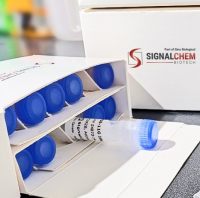Determination of NO with a Clark-Type Electrode
互联网
741
Reliable methods for the specific detection and quantitative determination of nitric oxide (NO) release from tissues are a prerequisite for a better understanding of the complex biological functions of this widespread cellular messenger. Although several techniques are available for the sensitive detection of NO, most of these methods either involve sophisticated and expensive equipment (e.g., electron paramagnetic resonance [EPR] spectroscopy and chemiluminescence) or lack the required specificity (UV/VIS spectroscopy). In the past few years, electrochemical methods have been developed that are highly selective for NO and exhibit a sensitivity in the nanomolar range. Within electrochemical sensors, Clark-type electrodes are most widely used, as they are commercially available and easy to handle. The principle of these sensors is that NO diffuses through a gas-permeable membrane and a thin film of electrolyte, followed by oxidation on the working electrode. This oxidation creates a current that is proportional to the concentration of NO outside the membrane. According to the manufacturer, the electrode is insensitive to O2 , N2 , CO, and CO2 but not to NO2 . However, this interference may be only a problem for gas-phase measurements, as in solution NO2 is highly unstable and quickly degrades to nitrite and nitrate.









